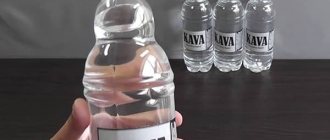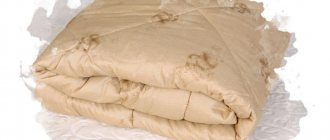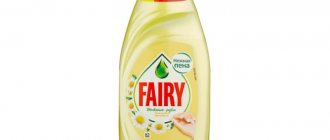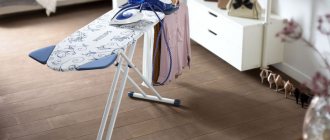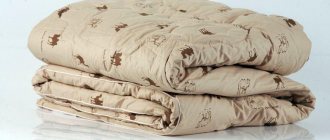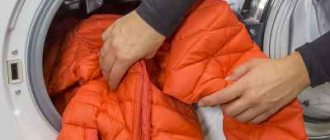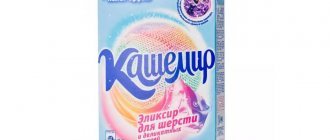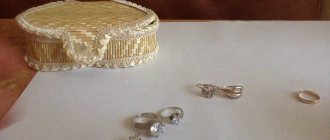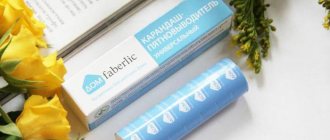| Place | Name | Characteristics in the rating |
| The best wool blanket manufacturers |
| 1 | Primavelle | Rare types of wool fillers |
| 2 | Nature's | Selected raw materials |
| 3 | Couch potato | The best ratio of price and quality |
| 4 | Ol-Tex | Review leader |
| The best duvet manufacturers |
| 1 | MirSon | Multi-stage quality control in laboratory conditions |
| 2 | Walteri | Eider models |
| 3 | AlViTek | Product durability |
| 4 | UNEKT | Practicality |
| Best Camel Blanket Manufacturers |
| 1 | German Grass | Luxury quality |
| 2 | Goldtex | Best gift |
| 3 | Don Textiles | Wide use |
| 4 | Tradition | Lowest prices |
On average, a person spends a third of his life sleeping, and it is very important that the body really rests and gains strength. This can be affected not only by a high-quality mattress or pillow of the correct shape, but also by a blanket. Agree, even lying for an hour under a pleasant-to-the-body, light-weight and warm blanket is a pleasure. When choosing a model, it is important to pay attention to the size, material of the case and, of course, the filling.
The most common types of fillers:
- Down - allows air to pass through and retains heat;
- Wool – adapt to a person’s temperature and do not cause sweating;
- Camel - considered valuable, durable and cozy.
Today, the home textile market in Russia and the CIS countries offers a huge range of companies producing bed linen, and it may be difficult for an ordinary buyer to choose the best option. To do this, we have created a rating of the best manufacturers of blankets, both budget and luxury.
The best wool blanket manufacturers
Wool is superior to padding polyester and other artificial fillers due to its thermoregulatory qualities. Under such a blanket you will not be cold or, on the contrary, hot. Depending on your natural body temperature, it will either cool down or warm up – the best option for the summer season. Another advantage of this type of blanket is durability. The service life can reach several decades! A wool blanket is easy to care for, due to its elasticity, it is easy to wash and dry yourself.
Tips for choosing
Please note the following points:
- Seasonality. Ideally, the blanket belongs to the all-season product group. We reviewed them in our rating. But if you need a lightweight version, the previously mentioned manufacturers also offer such options. Here, pay attention to the density of the filler. As a rule, for winter blankets it starts at 300 g/m², and for summer blankets it starts at 200 g/m².
- Materials. It’s great if the product is filled with 100% camel wool. It's even better when the cover is made of cotton.
- Additional details. A quality blanket is equipped with quilting, piping and decorative stitching. Has a signature design.
- Manufacturer. We strongly advise you to carefully study the seller. Because today there are companies that supply fakes. Carelessness will lead to disappointment and loss of a significant amount of money.
- Reviews. Read the comments on the product. This way you will make the right choice.
Main Dimensions
Common sizes:
One and a half:
- 140x205 cm;
- 145x205 cm;
- 150x210 cm;
- 155x215 cm;
- 160x220 cm.
Double:
- 172x205 cm;
- 175x205 cm;
- 180x210 cm;
- 200x220 cm;
- 240x220 cm.
Children's:
- 110x140 cm;
- 100x135 cm;
- 100x140 cm;
- 100x150 cm.
European standard:
- 155x215 cm;
- 172x205 cm.
Ability to “breathe”
Again, due to the structure of the hair, camel wool products have excellent breathability, so it is almost impossible to sweat under them. In addition, they have a lot of health benefits:
- blood circulation improves, due to this the process of tissue nutrition and metabolism improves;
- toxins produced by the body are neutralized;
- the skin becomes more elastic and elastic, a rejuvenating effect occurs;
- there is protection against electromagnetic fields;
- inflammatory processes occurring in the body are relieved;
- for osteochondrosis, radiculitis and arthritis, relief from pain and discomfort is stimulated.
What to look for when choosing a wool blanket
It is recommended to choose bedspreads made from natural sheepskin or camel leather based on general parameters and appearance. Affiliation will be:
- with a homogeneous fabric (the fibers do not come out of the textile cover);
- soft to the touch (the older the sheep or camel, the spikier and coarser the wool);
- well processed (no protruding threads or uneven seams);
- have a specific aroma of wool, and not chemical, unpleasant, foreign odors;
- have a quality certificate.
Allergy sufferers need to look at the cover: it should be made of natural, breathable fabric. This will filter out small particles that act as allergens.
Important! Brands attach a sealed bag to natural blankets, inside which the buyer can examine in detail the quality of the wool filling.
Before purchasing a bedspread, it is recommended to choose its thickness. Detailed parameters, including seasonality and care features, are indicated on the label.
The manufacturer places all important information about the blanket on a tag or label.
Products from
The company has been operating since 1991. The assortment consists of eight areas of activity, each of which presents several types of popular products.
- Pillows (down, with synthetic filling, eco, with natural filling, orthopedic).
- Blankets (wool, down, cotton, bamboo, synthetic).
- Mattress covers (made of natural and synthetic materials).
- Textiles for children (pillows, blankets, mattress covers, bed linen are made from environmentally friendly materials that eliminate the possibility of allergies).
- Bed linen (sets, individual items, children's bedding).
- Terry towels of different sizes.
- Textile accessories for the home (blankets, decorative pillows, bedspreads, kitchen utensils).
Dargez blankets and pillows, as well as all other products manufactured by the company, are confirmed by certificates:
- Oeko-Tex Standard 100 – confirms environmental safety and is the most significant in the global system for assessing the safety of textiles.
- EcoLabel is a European level certificate indicating high quality, safety for humans and the environment.
- IDFL is an assessment by an independent international laboratory of product compliance with international standards for down and feather products. This certificate is confirmed annually.
Types of camel hair
The majestic ships of the desert live in conditions where few mammals can survive. One of the means of adaptation to harsh reality is camel hair. The hairs that cover the body of animals are hollow inside, which allows them, on the one hand, to conserve heat, and on the other, to allow air to pass through.
The wool of two types of camels is used for production: one-humped and two-humped. One-humped animals live in deserts and have thin fur. Bactrians are inhabitants of the steppes, they are covered with long hair.
“The younger the animal, the softer its fur”
Animals are clipped immediately after molting, then the undercoat is combed out. If the ships of the desert “give” about 4 kg of wool, then their steppe counterparts give about 10 kg of wavy fur. The wool is sorted: the softer wool is used for clothing production, the hard wool is processed into yarn.
Which blanket is lighter?
Nobody wants to sleep sweating under a heavy blanket, so it's important that it's lightweight and moisture-wicking. Also, air exchange plays an important role.
So which is easier: camel or sheepskin?
A camel blanket is half the weight of a sheep blanket, and besides, it is moisture resistant, which is definitely a plus.
Don’t be too afraid of the heaviness of a sheepskin blanket, because there are different thicknesses and densities of wool filling. Therefore, you can choose the right one for each time of year. Generally, there are three types of blankets:
- all-season, consisting of 200 grams of wool fibers per 1 square meter;
- warmer (winter) - 300 grams;
- the warmest and most voluminous - 400 grams.
How to use it correctly - with or without a duvet cover?
For everyday use, a duvet cover is definitely a must. It performs a protective function, protecting against dust and dirt of various kinds. In addition, it is more hygienic - we wash bed linen much more often than the blanket itself. However, the therapeutic effect is stronger if the skin is in direct contact with the fur. Therefore, if you are the owner of a woven or fur product and want to conduct a “camel therapy” session, then it is more advisable to remove the duvet cover during the session to ensure direct skin contact with the open product.
In order for the blanket to serve for a long time without losing its positive properties, it is important to follow simple rules of care:
- washing is allowed, ideally by hand, but machine washing in a gentle mode is also allowed. The maximum permissible water temperature is 30 degrees C;
- It is better to wash with special products containing lanolin;
- squeeze gently and carefully, without squeezing tightly or twisting;
- After washing, dry in a horizontal position in a well-ventilated area;
- bed linen, in particular duvet covers, should be made of natural fabrics with good hygroscopicity and breathability;
- at least twice a year it is necessary to ventilate the blanket, preferably in the fresh air, but protect it from exposure to direct sunlight;
- store in a well-ventilated area in a cotton bag, separate from other bedding.
Often, the purchase of certain textiles for the home raises many questions that need to be answered. For example, which blanket is better, camel or bamboo? We give the answer.
The warmth of a blanket is an important indicator. In this article we consider the characteristics of product types according to this parameter.
Video review of Tailak camel down blanket.
(factory "Runo")
© 2022 textiletrend.ru
Care
In order for the camel to stay warm for a long time and always look great, you need to follow the rules of care and know a few tricks.
- Duvet cover - of course, it’s a shame to hide the beauty, but in a duvet cover the wool will not get dirty and will not require washing longer.
- Ventilation – it is enough to leave a new blanket in the air, preferably outside, for about half an hour, so that it takes in oxygen. In the future, this procedure should be repeated every six months, shaking the product first.
- Washing - if there is no contraindication on the label, the blanket can be washed on a delicate machine cycle or by hand, but it cannot be actively tumbled. Soak, lightly mash, drain and drain.
- Use special balms for woolen items; ordinary powder will wash lanolin out of the fibers, and the blanket will lose the lion's share of its properties.
- Air dry, out of direct sun, on a horizontal surface.
The video shows how camel hair is harvested in Mongolia:
We recommend that you learn how to choose an anti-bedsore mattress.
Duvets, features
Light, warm duvets made from down will never go out of style and will always have the largest pool of fans. In Russia, down products have become commonplace since ancient times as a response to climatic conditions. But if recently there was a small percentage of allergic diseases throughout the country, now this problem has become relevant in many families. What are the pros and cons of duvets?
Pros:
- Comfort. Down-filled duvets are cozy, soft and lightweight. It’s nice to wrap yourself up in it in cold weather, you can sleep under it with the window open and there is a significant minus outside the window.
- Breathability. Natural down retains heat due to air circulation, the skin does not suffer from lack of air exchange, which means your sleep will be sound and healthy.
- Natural thermoregulation. A duvet is equally comfortable both on cold days and on relatively warm days. One of the purposes of down and feathers is to provide birds with a constant temperature, regardless of the environment. These qualities are preserved in processed raw materials.
- Elasticity. It is preserved for the designated period of use due to the structural features of bird fluff.
- Durability. A duvet filled with down lasts an average of 15 years, and if you clean it regularly and partially replace only the damaged filler, the service life is significantly extended.
Minuses:
- Causes allergies in some of the population.
- Requires storage conditions and regular cleaning.
- High price.
Prices: summary comparison table
| Blanket name | Characteristics | price, rub. | |||
| Size | Filler | Case material | Density | ||
| AlViTek OVSh 20 Sahara | 172 × 205 cm | camel hair, swan fluff | teak, cotton 100% | 400 g/m² | 4 750 |
| IKEA STJÄRNBRÄCKA STERNBRECKKA | 150 × 200 cm | lyocell 50%, polyester 50% | lyocell 55%, cotton 45% | filler weight 1500 g | 3 999 |
| Darwin Ortho 1.0 | 140 × 205 cm | bamboo fiber 25%, polyester fiber 75% | microfiber | 300 g/m² | 1 690 |
| Primavelle Arctic | 140 × 205 cm | holofiber 100% | cotton 70%, polyester 30% | 450 g/m² | 5 100 |
| German Grass White Family Down | 155 × 200 cm | goose down 100% | down-containing satin, cotton 100% | filler weight 700 g | 23 400 |
| Kariguz Fleece | 140 × 205 cm | sheep wool 60%, polyester fiber 40% | teak, cotton 100% | 400 g/m² | 3 520 |
| Nature's Air Waltz | 200 × 200 cm | white goose down 100% | satin, 100% cotton | filler weight 700 g | 15 860 |
| Ivanovo textiles Premium bamboo | 143 × 205 cm | bamboo fiber, polyester | teak, cotton 100% | 450 g/m² | 2 797 |
| Verossa Blanket Camel | 140 × 205 cm | camel hair 30%, polyester 70% | percale, cotton 100% | 300 g/m² | 2 928 |
| Bivik Cotton | 140 × 205 cm | cotton fiber 100% | calico, cotton 100% | 800 g/m² | 1 856 |
Duvets, features
Light, warm duvets made from down will never go out of style and will always have the largest pool of fans. In Russia, down products have become commonplace since ancient times as a response to climatic conditions. But if recently there was a small percentage of allergic diseases throughout the country, now this problem has become relevant in many families. What are the pros and cons of duvets?
- Comfort. Down-filled duvets are cozy, soft and lightweight. It’s nice to wrap yourself up in it in cold weather, you can sleep under it with the window open and there is a significant minus outside the window.
- Breathability. Natural down retains heat due to air circulation, the skin does not suffer from lack of air exchange, which means your sleep will be sound and healthy.
- Natural thermoregulation. A duvet is equally comfortable both on cold days and on relatively warm days. One of the purposes of down and feathers is to provide birds with a constant temperature, regardless of the environment. These qualities are preserved in processed raw materials.
- Elasticity. It is preserved for the designated period of use due to the structural features of bird fluff.
- Durability. A duvet filled with down lasts an average of 15 years, and if you clean it regularly and partially replace only the damaged filler, the service life is significantly extended.
- Causes allergies in some of the population.
- Requires storage conditions and regular cleaning.
- High price.

